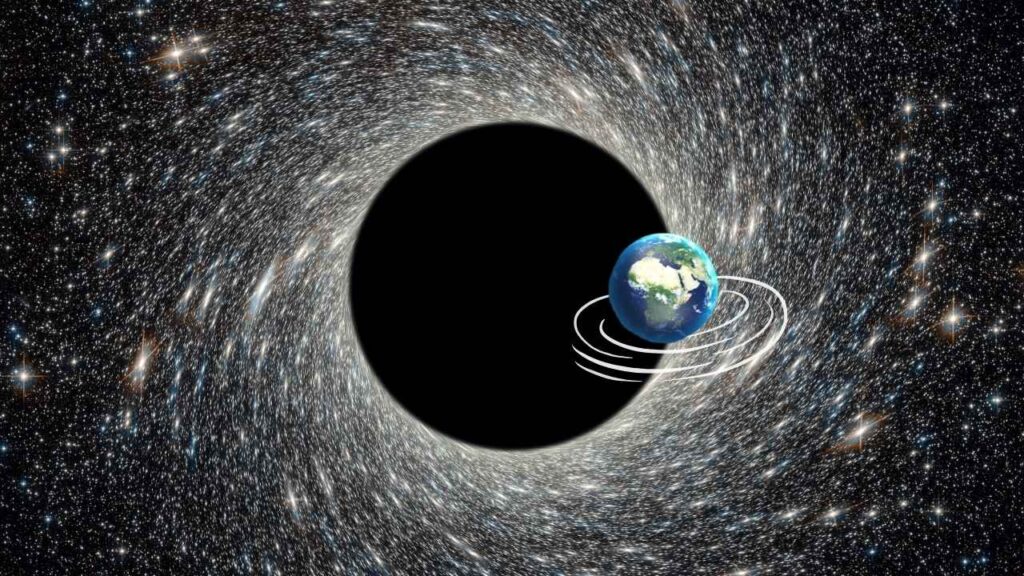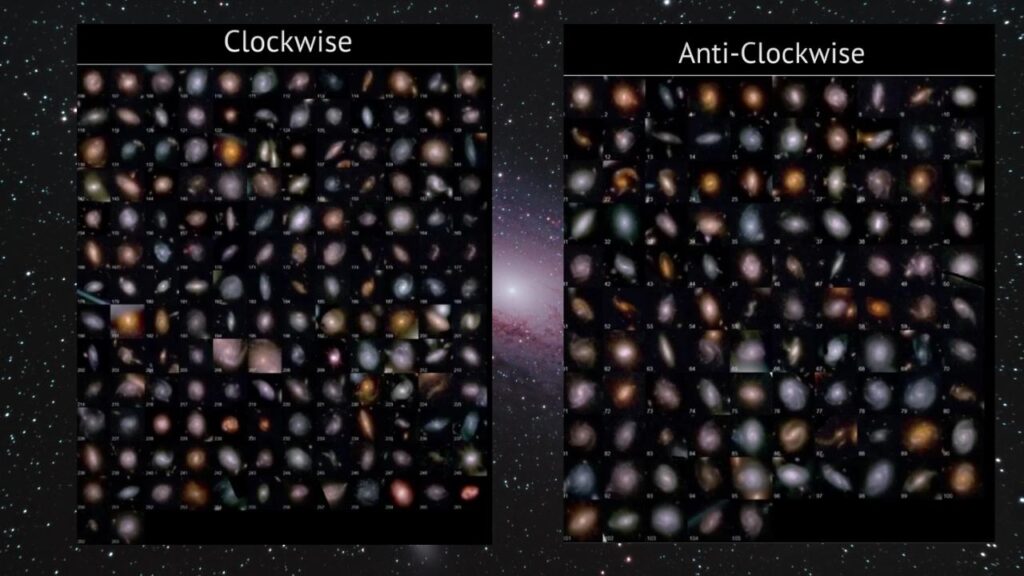James Webb Telescope Data: Could our entire universe actually exist inside a gigantic black hole? This question, once considered pure science fiction, is now being seriously discussed by scientists thanks to new discoveries from the James Webb Space Telescope (JWST). In 2025, a series of surprising findings from JWST has challenged our basic understanding of the cosmos, from how galaxies spin to how the universe itself may have begun.

In this article, we’ll break down what the JWST found, why it matters, and how this new data is changing the way both professionals and curious minds think about the universe.
James Webb Telescope Data
| Aspect | Details |
|---|---|
| Main Discovery | JWST found that about 60% of ancient galaxies spin in the same direction, suggesting a cosmic order rather than randomness. |
| Sample Size | 263 galaxies, some as old as 300 million years after the Big Bang. |
| Standard Expectation | Galaxy spins should be random—roughly 50% clockwise, 50% counterclockwise. |
| Observed Pattern | ~60% spin clockwise, 40% counterclockwise; a significant imbalance. |
| Implication | Supports the “black hole cosmology” theory: the universe may be inside a black hole. |
| Professional Impact | Challenges standard cosmological models; may require new theories about the universe’s origin and structure. |
| Official Resource | NASA James Webb Space Telescope |
The James Webb Space Telescope has opened a new chapter in our understanding of the universe. Its discovery that most ancient galaxies spin in the same direction hints at a cosmic order that could mean our universe is inside a giant black hole. While this theory is still being tested, it’s already inspiring scientists, students, and space enthusiasts to rethink what’s possible. Stay tuned—the universe may have even more surprises in store!
What Did the James Webb Telescope Discover?
The Surprising Spin of Ancient Galaxies

Since its launch, the JWST has looked deeper into the universe than any telescope before it. In a recent study, scientists analyzed images of 263 ancient galaxies, some dating back just 300 million years after the Big Bang. They noticed something strange: about 60% of these galaxies spin in the same direction—clockwise—while only 40% spin counterclockwise.
Why Is This Surprising?
In a universe that formed randomly, we’d expect galaxy spins to be like a coin toss: half one way, half the other. But the JWST data shows a clear preference, as if the universe itself has a hidden “twist” or “spin”.
“One explanation is that the universe was born rotating. That explanation agrees with theories such as black hole cosmology, which postulates that the entire universe is the interior of a black hole.”
— Dr. Lior Shamir, Kansas State University
What Is the “Universe Inside a Black Hole” Theory?
Breaking Down Black Hole Cosmology
The black hole cosmology theory suggests that our universe is not just floating in empty space—it’s actually the inside of a massive black hole. This idea isn’t new; it dates back to the 1970s, but the JWST’s findings have brought it back into the spotlight.
How Could This Work?
- Black holes are regions in space where gravity is so strong that nothing—not even light—can escape.
- The event horizon is the “point of no return” around a black hole.
- The theory proposes that what we see as the universe is actually the space inside a black hole’s event horizon, possibly formed in a “parent universe”.
Why Does the Galaxy Spin Matter?
If the universe was born inside a spinning black hole, it would inherit that rotation. The JWST’s discovery of a preferred direction in galaxy spins could be a cosmic fingerprint of this origin.
Why Does This Matter? (For Kids and Pros Alike!)
For Curious Kids
Imagine you’re inside a spinning playground merry-go-round. Everything you see around you—your friends, the sky, the trees—seems to move in a certain way because you’re spinning. Now, imagine the whole universe is like that merry-go-round, spinning inside a giant black hole!
For Professionals
This finding challenges the cosmological principle, the idea that the universe is the same in every direction and has no special “center” or “spin.” If the universe does have a preferred direction, it could mean our models of the Big Bang and cosmic evolution need major updates.
Practical Advice: How to Understand and Discuss This Theory
1. Stay Skeptical but Curious
- Extraordinary claims require extraordinary evidence. While the JWST data is compelling, more studies are needed to rule out measurement errors or biases.
- Encourage open-minded discussion, but rely on peer-reviewed research and official sources.
2. Watch for New Data
- The JWST is just getting started. Future observations may either confirm or challenge these findings.
- Keep an eye on updates from the official JWST website.
3. Connect the Dots
- This theory links black hole physics, quantum mechanics, and cosmology. Professionals should look for interdisciplinary research opportunities.
4. Communicate Clearly
- When discussing with non-experts, use analogies (like the spinning merry-go-round) to make complex ideas accessible.
- For students: Try drawing a black hole and imagining what it would be like inside!
Quantum‑Centric Supercomputing Collaboration Begins Between IBM And Pasqal
Breakthrough in Electron Microscopy Captures Individual Nanoparticles with Unprecedented Precision
FAQs About James Webb Telescope Data
Q1: Does this mean we’re definitely inside a black hole?
A: Not necessarily. The JWST data suggests it’s possible, but more evidence is needed. It’s one of several theories scientists are exploring.
Q2: How does this change our understanding of the universe?
A: If true, it would mean the universe has a built-in order and may have started inside a spinning black hole, challenging many current ideas about space, time, and the Big Bang.
Q3: Could this explain the universe’s expansion?
A: Yes, some scientists believe that if the universe is inside a black hole, its expansion could be due to the black hole itself “growing” as it absorbs more matter.
Q4: Are there other signs we’re inside a black hole?
A: Some researchers point to similarities between black hole physics and the universe’s structure, like the cosmic microwave background and quantum fluctuations, but these are still being studied.
What’s Next? The Future of Cosmic Discovery
The JWST will continue to observe the oldest and farthest galaxies, giving us more clues about the universe’s true nature. Scientists are also developing new models to explain the observed galaxy spins and test the black hole cosmology theory further.
For Students and Educators
- Use this discovery as a springboard for science projects or classroom debates.
- Explore topics like black holes, galaxy formation, and the Big Bang using resources from the official JWST website.
For Professionals
- Collaborate across astrophysics, quantum physics, and mathematics to develop new models.
- Stay updated with the latest peer-reviewed research and JWST data releases.






